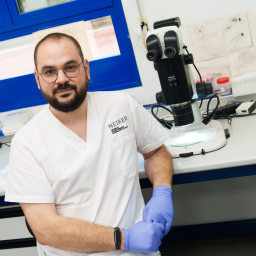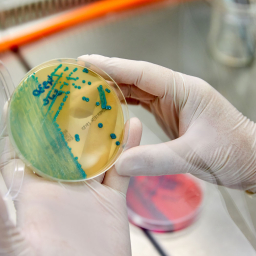NEW
NEIKER will develop new diagnostic protocols and new tools for the control of animal tuberculosis
21 February 2024- Led by the technology centre, the European INNOTUB II project will focus on mitigating the effects of this disease in the cross-border region between Spain, France and Andorra.
- With a multidisciplinary approach, the initiative will range from the evaluation of biosecurity practices on farms to the development of new diagnostic and control tools.
Animal tuberculosis is a chronic disease affecting various mammals, both cattle and other mammalian species. The infection is caused by bacteria belonging to the Mycobacterium tuberculosis complex, mainly Mycobacterium bovis and Mycobacterium caprae. Pathologically, it is similar to human tuberculosis and is characterised by nodules in the lungs and other organs, consuming the animals. The disease is subject to eradication programmes, mainly focused on cattle, although its application in goats is gaining ground. It is a disease that generates a great economic impact and major concerns in the first sector, as well as having the potential to affect public health as it is a zoonosis.
In this context, the European INNOTUB II project, led by the NEIKER technology centre, is positioned as an efficient solution to tackle animal tuberculosis in the cross-border region between Spain, France and Andorra. This initiative consolidates the INNOTUB scientific network of excellence for the improvement of animal tuberculosis control, surveillance and eradication programmes created in INNOTUB I, a pioneering project in the region that was launched in 2020 with funding from the European cooperation programme INTERREG POCTEFA 2014-2020 to promote the sustainable development of the trans-Pyrenean territory.
INNOTUB II, supported by the new INTERREG POCTEFA 2021-2027 programme, will maintain its multidisciplinary approach, addressing issues such as the evaluation of biosecurity practices on farms or the development of new tools for the diagnosis and control of tuberculosis.
One of the novelties of this new project will be the use of genomic sequencing technologies, which make it possible to determine the complete genetic sequence of the bacteria that cause this disease, as if it were their fingerprint. This will enable researchers to gain a detailed and precise understanding of how the infection is transmitted between domestic and wild animals, and to explore the resistance of the bacteria that cause the disease to antimicrobial treatments.
In addition, technology transfer and knowledge exchange between the region, which includes France, Spain and Andorra, will be promoted.
Biosafety platform and modelling methods
The consortium will work on the implementation and evaluation of a previously developed biosecurity platform, with the aim of supporting farmers in implementing more effective measures in their herds. This initiative will include a comprehensive assessment of the perception of biosecurity and associated risks by farmers, veterinarians and veterinary services.
In parallel, disease transmission between wildlife and livestock will be analysed and quantified through modelling methods, using information obtained from whole genome sequencing of bacteria isolated in the field. This will provide a clearer picture of how animal tuberculosis spreads in the trans-Pyrenean region.
Finally, the molecular diagnostic methods for tuberculosis developed in the previous project will be validated, while new diagnostic tools and vaccines will be developed to allow better control of the disease.
This will allow the design of more effective and specific control strategies to combat the disease in animal populations, while reducing the risk to humans and promoting health and welfare.
About INNOTUB II
In addition to NEIKER as project coordinator, the National Agency for Food, Environmental and Occupational Health Safety (ANSES), the National Veterinary School of Toulouse (ENVT), the Institute of Agri-Food Research and Technology (IRTA) and the Autonomous University of Barcelona (UAB) are also participating. Also, as a novelty, the INNOTUB II project has the participation of the Government of Andorra as a partner, so that some of the planned activities will also be carried out in the Principality.
INNOTUB II will last three years and will be financed by the INTERREG POCTEFA 2021-2027 Programme, a European territorial cooperation programme created to promote the sustainable development of the border territory between Spain, France and Andorra. This Community financial support is aimed at strengthening the economic and social integration of this area and helps to improve the quality of life of its inhabitants. In addition, the projects programmed receive co-financing from the European Regional Development Fund (ERDF).
For more information on the INNOTUB network and its progress, please visit the project website.






